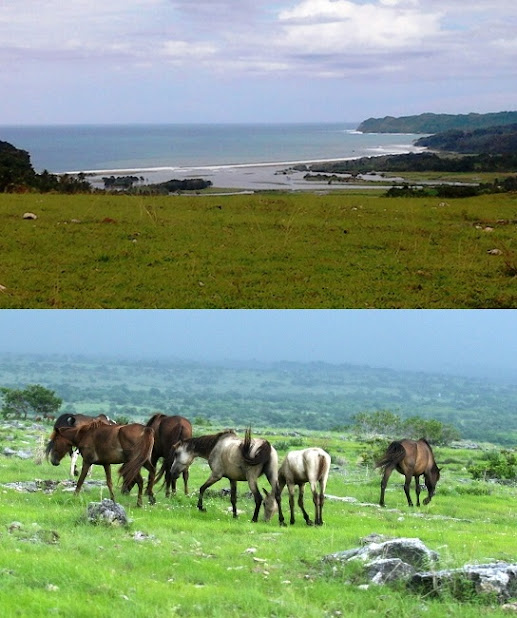 |
| Ratengaro Village, Sumba |
Vast expanses of savanna, limestone hills lined up, villages built on hilltops with traditional thatched roof concepts. What a beautiful natural splendor, united with the local wisdom of the local community. That is a brief overview of the landscape of Sumba Island, one of the small islands in the Indonesian region which has been included in the ranks of the world's best spots to visit several times in publications by well-known travel magazines. Among them is the Conde Nest Traveler - New York in 2022.
The island of Sumba is indeed beautiful, the expanse of wild grass with Sandelwood horses grazing there, palm and coconut palms, white sand and coral blending together with the savanna and wild horses, the terraced rice fields and the way of life of the people who inhabit it who generally still practice the teachings of his ancestors, namely the Merapau religion. All become one exotic unit.
Sumba can be an alternative for tourists who want to feel calm and peaceful. Sumba is the right destination for tourists who want post-pandemic healing. There is a forest that is cool and beautiful. You can absorb natural energy in the peace of Sumba Island.
Wairinding Hill
 |
| Wairinding Hill |
Puru Kambera Beach
 |
| Puru Kumbera |
Puru Kambera Beach is located 25 kilometers east of Waingapu City. You can find panoramic views of beautiful white sand and clear blue sea water here. There is also a stretch of green savanna around the beach. You will also find several horses seen enjoying their meal in the green meadow.
Rice fields with beautiful panoramas.
 |
| Rice field tipical in Sumba |
Sumba Island is not the main rice producer in Indonesia, but on this island you will find lots of rice fields, even though they are not that wide, but with beautiful panoramas. It's as if the rice fields were deliberately designed to be aesthetically harmonious with the natural environment around them.
Laiwangi Wanggameti National Park
One of the tourist attractions in Sumba which is quite famous is the Laiwangi Wanggameti National Park, Sumba. A pleasure destination that is never empty of visitors, both domestic and foreign. There are many destinations that can be enjoyed in this park. Everything offers a very extraordinary tourist charm. Even the Laiwangi Wanggameti National Park deserves to be called a good educational tourism vehicle.
 |
| Laiwangi National Park |
Laiwangi Wanggameti National Park is a national park for the protection of wildlife in Sumba. Because of this, many interesting flora and fauna are found in this place. Even if you are lucky you will meet rare animals in it. This park is located on a plateau with a size of 800 meters above sea level. Because of that, this type of elfin forest is not only shady but the weather is also cool and the scenery is beautiful. This is the reason why people are interested in visiting it. The next beauty lies in the typography that deserves to be called challenging. Which in the location of the park there are still steep and steep slopes. Green hills are also scattered in various locations. This is what makes the charm of the forest even more stunning.
Pasola
Pasola comes from the word 'sola' or 'hola' which means javelin. This tradition is held once a year at the beginning of the planting season, in February in Lamboya District and March in Wanokaka and West Laboya or Gaura Districts.
 |
| Pasola Tradition |
The exact date of the Pasola celebration is determined by the Rato based on the calculation of the dark moon, the bright moon, and by looking at natural signs. Meanwhile, one month before Pasola, all residents must comply with a number of restrictions, including the prohibition against holding parties, building houses, and so on.
Pasola's roots are deeply embedded in the culture of the people of West Sumba, making Pasola not only a place for crowds. More than that, pasola is a religious cult, namely a form of devotion and acclamation of obedience to ancestral spirits.









